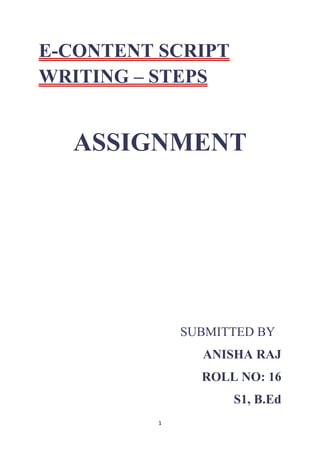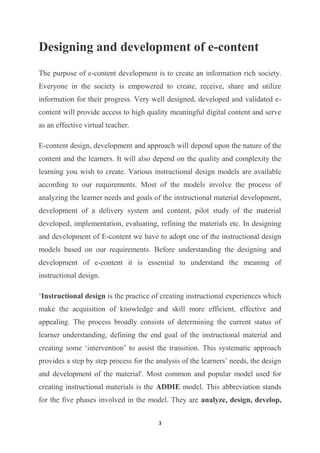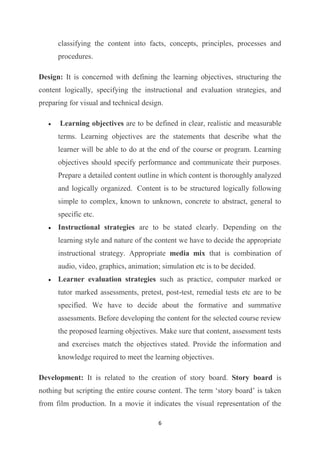1. The document discusses the process of designing and developing e-content using the ADDIE model of instructional design.
2. The ADDIE model consists of 5 phases - Analysis, Design, Development, Implementation, and Evaluation. In the analysis phase, learner needs and goals are analyzed. The design phase involves defining learning objectives and structuring content.
3. In the development phase, a storyboard is created to script the course content. The implementation phase distributes materials to learners. Formative and summative evaluations are conducted in the evaluation phase to assess effectiveness.








